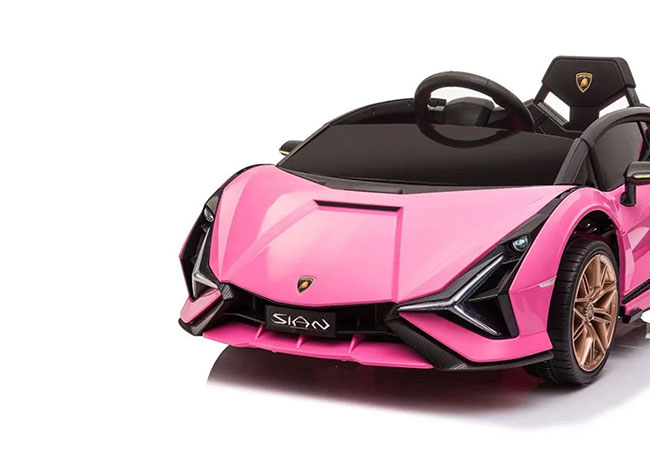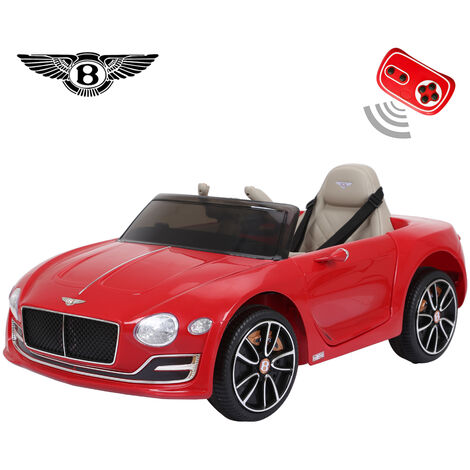What Do I Need Be Aware Of About The Battery's Life And Charging Times Of An Electric Ride On The Kids' Car?
Understanding the battery's lifespan and the charging time of an electric ride-on children' car is essential for making sure that your kids have uninterrupted playtime and maximum performance. Here's what you should know about - Type of battery -
The majority of electronic ride-on vehicles designed for children are powered by rechargeable batteries. These are typically lithium-ion batteries or lead acid batteries. Lead-acid batteries take longer to charge and have lower battery lifespan.
Battery Capacity
The battery capacity, measured in ampere-hours (Ah) or watt-hours (Wh) will determine the length of time that a ride-on vehicle can operate on a single charge. Larger capacity batteries offer longer time to play before needing to recharge.
Run Time -
The running time of the electric ride-on car is referred to the length of time it will operate continuously on a single charge. It is based on a variety of variables such as the battery, the motor as well as the terrain and the weight of the rider.
The typical electric ride-on car run times range between 30 minutes to 2 hours on a single charge. Some battery packs with higher capacity can offer longer time-to-run.
Charge Time
The charging time refers how long it will take to recharge a fully exhausted battery. Charge times vary based on the battery capacity, charger specifications, and charging methods.
The average charging time of electric ride-on vehicles is between 8 and 12 hours. Some models provide faster charging times, especially when using lithium-ion batteries.
Battery safety and longevity are dependent on charging the battery according to the manufacturer's guidelines. Overcharging or undercharging batteries could have a negative impact on their performance and lifespan.
Charging Method
Electric ride-on vehicles are typically equipped with a charging station that connects to a standard outlet in the home. Certain models might have fast-charging capabilities or include a smart charger that monitors the battery's state of charge and adjusts the charging speed in line with the state of charge.
Ensure that the charging connectors and port are compatible with the charger supplied with the ride-on car to avoid damage to the battery or electrical system.
Batteries Additional -
Some electric ride-on cars may offer the option to purchase additional batteries, or even spare batteries for longer playing time. With extra batteries in stock you can exchange the battery that is depleted for a fully charged one to cut down on time.
If you are aware of the charging times and the battery life of an electric car for kids, your child will be able to enjoy endless hours of play and adventure. It is crucial to recharge the battery as often as you can and adhere to the correct charging methods. This will improve battery performance. Follow the recommended ride on toys for blog examples including electric ride on, electric ride along car, remote control childrens electric cars, ride on digger, car toy toy, childrens electric cars, car toy car toy, cars pedal car, car for toy, race car toy and more. .

How Are Kids Car Models Made For Outdoor And Indoor Use?
Indoors or out, kids car models are made to function in a variety of conditions and settings. They are constructed differently - Indoor Use Cars
Size and Weight- Cars designed for indoor usage will be smaller in dimensions and weigh less, making them easier to maneuver within small spaces. These include living rooms as well as playrooms. These vehicles are compact and compact, which allows them to maneuver easily around narrow passageways or corners.
Low Ground Clearance Cars that are used indoors have a low ground clearance, which means they won't be snagged or stuck by obstacles such as rugs thresholds or carpets. This allows for smooth, continuous motion on indoor surfaces.
Smooth Wheels: The wheels on indoor cars are usually composed of smooth materials such as plastic or rubber. This creates the traction and grip needed for smooth surfaces, such as flooring made of hardwood laminate floors, tiles. They are engineered with the least amount of noise to prevent scratching or scuffing indoor surfaces.
Limited Speed - Indoor vehicles generally have a limit on speed, to allow for safe and secure driving even in tight space. This helps prevent collisions or accidents that may occur with walls, furniture, or any other obstacle located inside.
Outdoor Use Cars -
Construction that is durable - Outdoor vehicles are constructed with durable materials like steel or tough plastic, to withstand the rigors of handling and elements of nature such as the sun, humidity and temperature variations. They are more resistant against wear and tear due to exposure to conditions outside.
For outdoor use, cars that have a higher clearance of the ground can overcome obstacles and bumps in the outdoors. This lets them traverse rough surfaces like gravel, asphalt dirt, grass, or even dirt without getting stuck or harmed.
Traction Tires -- The tires that are used on cars that are used outdoors often feature treads or patterns created to improve grip and traction when driving on roads that are slippery or uneven. This provides better control and stability when driving on terrains that are outdoor.
Weather Resistance - Designed for outdoor use, vehicles can include components that are resistant to moisture or environmental damage, such as sealed electronics and waterproof casings. These vehicles can take on rain, mud or even puddles with no loss of performance.
High Speed - Cars that are designed to be used outdoors have higher speeds due to their design to handle the wide spaces and long distances encountered in nature. This may provide an thrilling and adventurous experience for children that are out in the open.
Be aware of these features and traits when selecting a car for your child's car. It is designed to the environment and usage that you are thinking about, whether it is outdoor, indoors, or both. You can ensure an enjoyable, long-lasting and safe playing experience. Read the recommended discover more on Audi kids car for blog tips including electric ride along car, electric car ride, two seater electric cars, toy ride, remote control childrens car, riding digger, ride ons, childs car toy, digger ride, ride of car and more. .

What Is The Best Way To Choose The Budget Of A Car Ride For A Child?
Take into consideration factors such as longevity, durability, financial situation, and features when establishing a budget. How do you set a budget for your ride-on car to ensure you get the most value for your money: Research average prices
Start by comparing prices of the various models. Prices for different models are available from online retailers, toys stores and manufacturer's websites.
What are the Must-Have features?
Determine which features are essential for your child's enjoyment as well as security. The cost of a ride-on automobile will be influenced by features like realistic sound effects as well as working headlights, seatbelts and functioning lights.
Prioritize features according to your child's interests and budgetary restrictions.
Think about Durability and Longevity
Find ride-on vehicles made from durable materials such as metals and plastics of high-end quality that are able to withstand daily use and the harsh outdoor conditions.
You can also ask parents for their opinion as well as read the reviews to assess the durability of a model. The upfront cost of a durable ride-on car will save you money in the long run by avoiding frequent repair and replacements.
Compare Prices from Different Retailers
Comparing prices between stores is a great method to get the most for your budget. Local toy shops, department stores and specialty stores can offer affordable rates.
Be on the lookout for sales and discounts sales that allow you to save money without the quality.
Include additional costs in your budget
Be aware of any additional costs that come when purchasing the ride-on car for your child, such as shipping fees, taxes, or accessories (e.g., spare batteries, safety equipment).
Plan the costs of your vehicle, including the maintenance and accessories.
Create a realistic budget
Create a budget that's sensible and reflects your priorities and needs. Estimate the maximum amount you're willing to pay for a child's ride-on, considering characteristics such as durability, endurance, or long-term use.
Do not overspend or overspread your budget to buy unnecessary features in your child's play.
Take into consideration the long-term value -
Consider the long-term worth of the kid's ride-on vehicle in terms of its durability, versatility, and ability to evolve alongside your child. In the long term, investing in the most feature-packed, top-quality vehicle might be more beneficial than cheaper alternatives.
Create a realistic budget for purchasing an automobile that rides on for kids and evaluate costs, features and endurance. While staying within the budget, focus on features that matter most for your child's safety as well as enjoyment. Read the top rated remote control childrens cars kidscars.co.uk news for website tips including toy car toy car, cars pedal car, electric ride on, electric two seater cars, two seater childrens electric cars, riding digger, toy cars toy car, electric car ride, ride ons, cars pedal car and more. .

Comments on “New Reasons To Picking Electric Kids Cars”